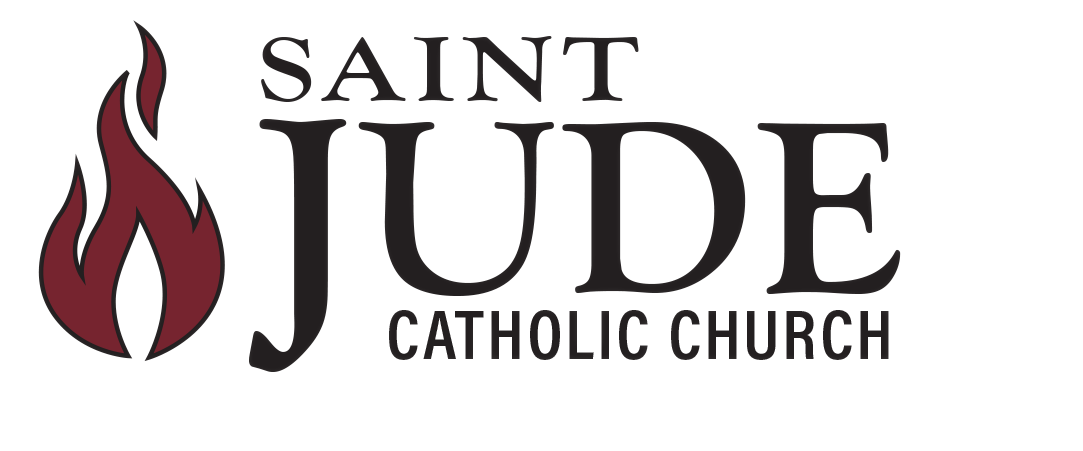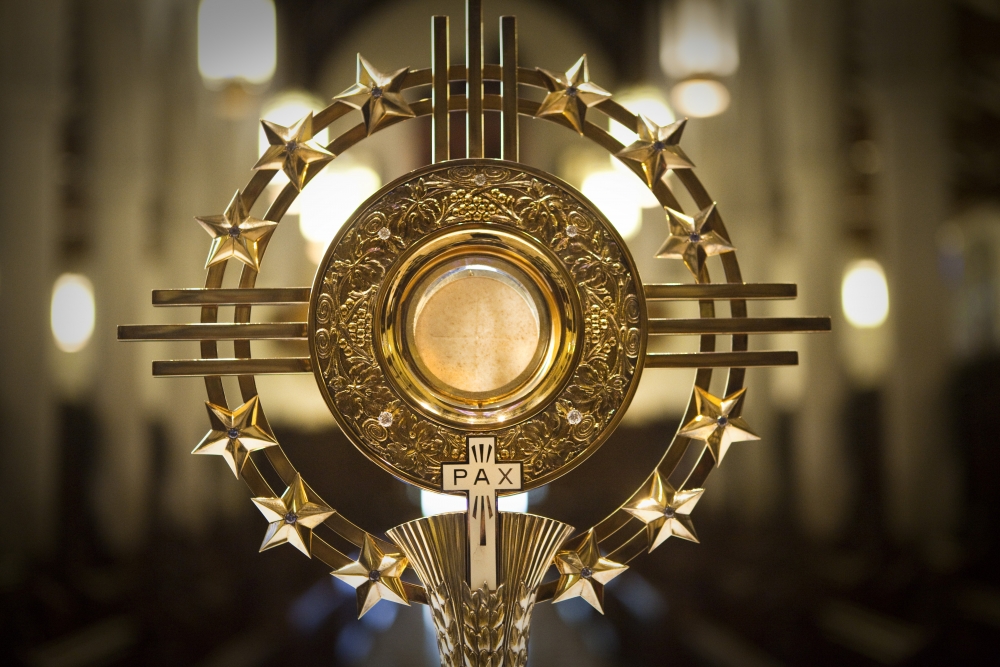Eucharistic Adoration
Schedule for Eucharistic Adoration
At St. Jude, Eucharistic Adoration with exposition of the Blessed Sacrament takes place each Monday, Wednesday, Thursday from 9:00 am to 9:00 pm, and Friday from 9:00 am until 5:00 pm. Please come by for a visit with our Lord. Spend a few minutes, an hour, or whatever your schedule allows at the time.
During Lent, please join us for Benediction and stay for the Stations of the Cross immediately following.
Additionally, the church is open from early in the morning till late in the evening, every day, so please come and adore our Lord Jesus Christ present in the tabernacle, any day of the month that you prefer. He is waiting for you!
Get more information or be added to the SCHEDULE
If you would like to learn more about Eucharistic Adoration, or you would like to be added to the schedule of regular adorers, click the button below to contact us. adoration@stjudecatholic.com
Frequently Asked Questions:
What is the relationship of Eucharistic adoration to the Mass?
The celebration of the Mass is the origin and purpose of the worship shown to the Eucharist outside the Mass. Eucharistic adoration extends Holy Communion in a lasting way even as it prepares the faithful to participate more fully in the celebration of the Mass. It leads us to acknowledge Christ’s marvelous presence in the sacrament and invites us to deeper spiritual union with him in the reception of Holy Communion.
What other times/locations is Eucharistic Adoration with Exposition of the Blessed Sacrament?
There are three Catholic parishes in Peoria that offer Eucharistic Adoration in dedicated chapels around the clock. Holy Family, St. Philomena's, and St Ann's. Please contact their respective parish offices for more details.
What is the importance of Eucharistic adoration?
Eucharistic adoration is the respect and worship we give to Jesus, who is truly present to us under the appearance of bread and wine. The Eucharist is a priceless treasure; by not only celebrating it but also by praying before it outside of Mass we are enabled to make contact with the very wellspring of grace. As St. Alphonsus Liguori noted, “Of all devotions, that of adoring Jesus in the Blessed sacrament is the greatest after the sacraments, the one dearest to God and the one most helpful to us.” [CCC 1418]
What forms does this adoration take?
We show our adoration in many ways. The most intimate form of adoration is Holy Communion, when we receive Jesus’ body into our own. The most common and ordinary way we adore Jesus is by genuflecting, that is, kneeling briefly on one knee, whenever we pass the tabernacle in a church (see Philippians 2:10). Outside the Mass, the Church gives us further opportunities to worship Jesus. We may visit him at the tabernacle. And we may adore him when the Sacrament is brought out from the tabernacle for public worship. This is commonly called “exposition.” [CCC 1378] When we pass by the Blessed Sacrament when it is exposed, as a sign of reverence we genuflect with both knees, or a profound bow if you are unable to kneel.
What is exposition of the Blessed Sacrament?
Exposition is the placement of the sacred host outside the tabernacle for public adoration. This can take many forms. The simplest form is the opening of the tabernacle doors. Another form is the removal of the sacred vessels from the tabernacle for a more prominent and visible placement. The Church also permits a “full” exposition, when the sacred host is clearly visible in a vessel called a “monstrance.”
What is the purpose of exposition of the Blessed Sacrament?
There are three purposes of Eucharistic exposition: (1) to acknowledge Christ’s marvelous presence in the sacrament; (2) to lead us to a fuller participation in the celebration of the Eucharist, culminating in Holy Communion; and (3) to foster the worship which is due to Christ in spirit and in truth.
What is Benediction with the Blessed Sacrament?
Benediction is a rite in which a priest or deacon pronounces a blessing over those who are present for Eucharistic adoration. As he gives the blessing, he elevates the monstrance that contains the sacred host. Benediction normally follows a period of prayer before the Blessed Sacrament, just prior to its reposition into the Tabernacle. Benediction is at 7:00p.m. on the first Friday of each month, which concludes the period of adoration. The prayers and responses for Benediction are listed on the back inside cover of the Today’s Missal books available at the top of the ramp as you walk in the chapel.
What is proper etiquette during Eucharistic adoration?
When we are not taking part in vocal prayers and hymns with other adorers during the opening and closing prayers, we should be praying silently. Whenever we pass before the place where the sacred host is exposed, we should genuflect with both knees, or perform a profound bow if you are unable to kneel. We should avoid any actions that might disturb or distract others or draw attention to ourselves rather than Jesus.
How should we pray during Eucharistic adoration?
There are many ways to pray. We may meditate silently by gazing on the sacred host. We may silently speak to Jesus from our mind and heart. We may also rely on devotions and prayers from Catholic tradition, such as the reading of Scripture, recitation of the rosary, or the litanies. Materials are supplied at the entrance of the chapel for you to use during adoration if desired.

